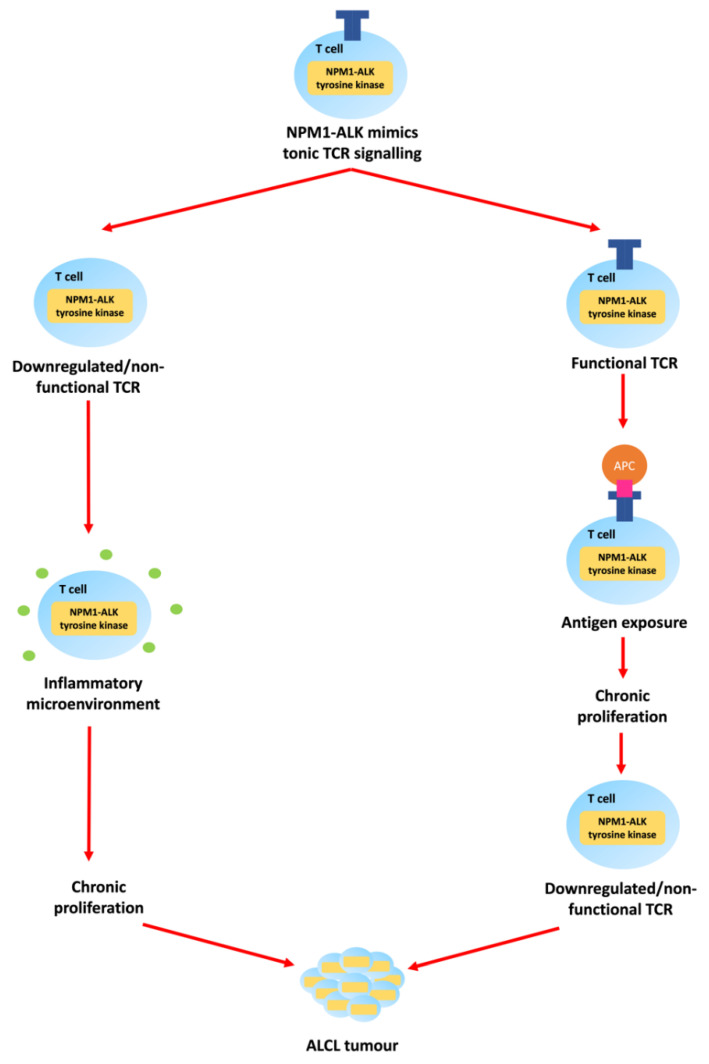Figure 3.
The pathogenesis and aetiology of ALCL expressing NPM1-ALK may be dependent on TCR signalling and/or microenvironmental factors. NPM1-ALK mimics low-intensity tonic TCR signalling required for T cell development. The TCRs are ultimately downregulated as they are either surplus to requirement or are prohibitive towards tumour development. If the TCR is downregulated or non-functional soon after emerging into the periphery, antigen-independent inflammatory microenvironmental factors might provide the ‘second hit’ promoting ALCL development. If the TCR is functional after emerging into the periphery, an antigen-presenting cell (APC) might expose the T cell to a ‘second hit’ in the form of a major histocompatibility complex (MHC)-bound ligand that provides additional stimulation and promotes ALCL development. With this additional stimulation, the TCR might then be downregulated to facilitate cell survival by preventing over-stimulation [2,7,11,20,21].

